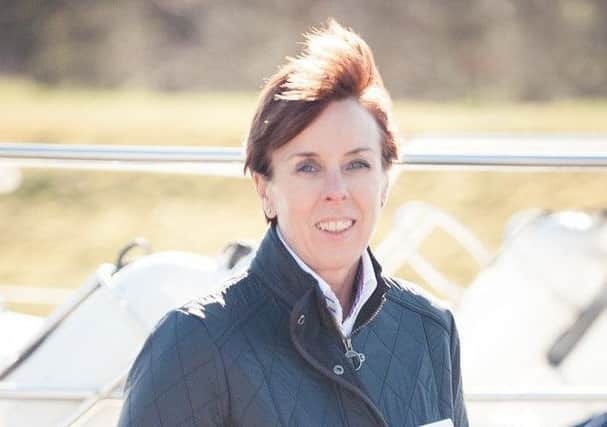Freda Newton MBE: Highlands are open for tourist business – if you build it, they will come


The report revealed that overall visitor numbers to attractions across Scotland as a whole saw an average increase of 0.1 per cent on 2017. However, attractions in the Highlands tell a different story. Neighbouring Urquhart Castle and Loch Ness by Jacobite took the top two spots for paid-for attractions outside of the central belt, enjoying a growth of 6.2 per cent and 9 per cent respectively – bucking the overall stagnancy in growth.
Both, along with Glenfinnan Monument, are also the only Highland-based attractions appearing in the top ten paid attractions in the country as revealed in the 2018 Visitor Attraction Monitor by Glasgow Caledonian University’s Moffat Centre for Travel and Tourism.
Advertisement
Hide AdAdvertisement
Hide AdI’ve been at the helm of Loch Ness by Jacobite since 2002, and last year celebrated a record-breaking number of visitors to the loch, with more than 315,000 visitors experiencing a Jacobite cruise in 2018. These results are encouraging and are telling of the positive impact recent investment into Scotland has had on visitor numbers, such as the knock-on effect of the recently opened V&A Museum in Dundee encouraging tourists to explore new parts of the country.
In 2018, 89 different nationalities visited the loch – which just goes to show the massive global appeal our small nation has.
At the end of the month, Inverness Airport will add a new flight route from London for the summer, bringing tourists on connecting flights straight to the heart of the Highlands. Plans are being made to service demand – the Highlands are truly open for business. On this note, a phrase that springs to mind is “with great power comes great responsibility”, which rings true for me in relation to the visitor influx to the Highlands in recent years.
After working in the Highlands tourism industry for more than 20 years and experiencing first-hand the skyrocketing global interest in the region, this is something I feel deeply passionate about.
There’s no doubt that the numerous articles listing Scotland as one of the world’s top destinations – and rightly so! – have created boundless opportunities for the local economy, with new businesses opening and the local hospitality industry thriving. However, to keep up with this demand and ensure we provide a consistent level of service for which the region is famed, a few things must be done. First is more dialogue between industry and schools. Young people are not considering a career in the hospitality industry, one that is the lifeblood of the region and a key growth sector over the next ten years.
The approach must be twofold – first engaging pupils and teachers and then providing opportunities like apprenticeships, work placements, school partnerships and professional development plans that allow young people to visualise sustainable career paths in the industry instead of viewing it as a stopgap during or after education. This will become more important as the implications of Brexit unfold.
Second is infrastructure. We need public investment in infrastructure, such as the Rural Tourism Infrastructure Fund. Allowing visitors to access the wonderful views and natural attractions safely will get them to recommend Scotland to their friends and facilitate the communities to give a better customer experience.
In the past year we’ve added a new vessel to the Jacobite fleet, the Maverick, to support rising visitor numbers, and we’ll soon open a new visitor destination, retail outlet and café at Dochgarroch. Having solid, sustainable transport infrastructure is key.
Advertisement
Hide AdAdvertisement
Hide AdCollaboration is also paramount. We work closely with partners such as VisitScotland and I sit on the Board of Highlands & Islands Enterprise (HIE) to share the collective voice of businesses across the region to ensure our approach is joined-up with the country’s tourism strategy.
Finally, know the customer inside-out. We can’t paint one brush-stroke across the different visitor profiles that visit. To provide the best service we can, we must understand the different people choosing to come here and their motivations.
We’re proud to have recently enrolled some of our customer-facing team on Mandarin lessons so they can foster better communication with growing number of visitors from China – one of 15 Highland businesses taking part in the scheme.
All of the above has more chance of being achieved with the recent announcement that the Visit Inverness Loch Ness Tourism BID has been extended for a further five years. This investment is well placed to support hotels, guesthouses, self-catering, visitor attractions, restaurants, outdoor activity providers and more.
Scotland is a small nation competing with major destinations worldwide, so it’s vital we have the same levels of support to continue to grow our offering in a sustainable way.
Of course, it’s impossible to write this without mentioning Brexit. It remains unclear what will happen even in a few days, never mind a few months’ time, or what the wider repercussions for the tourism industry will be. But for now, we must rally together to ensure we’re in a position to achieve sustainable growth without compromising on standards. We’re a country with a true fighting spirit, and I have no doubt we’ll succeed.
Freda Newton MBE, managing director, Loch Ness by Jacobite.